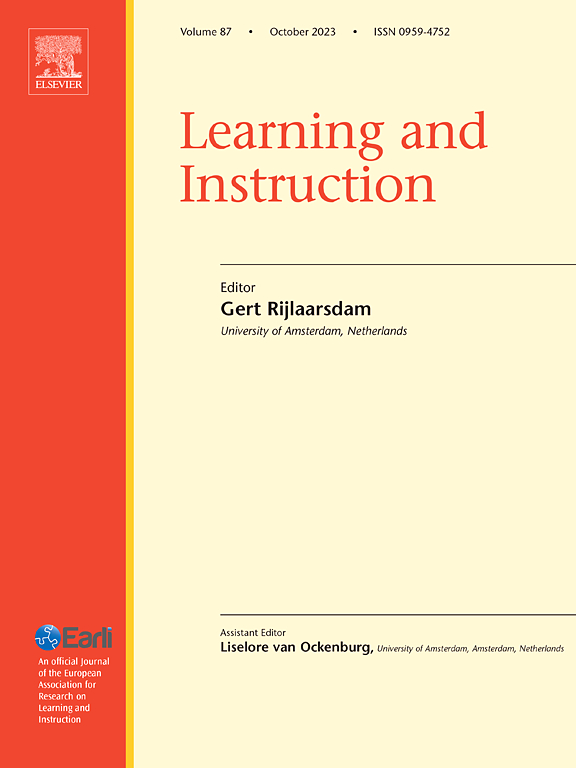Executive functioning and language ability in preschool hearing-impaired children: A cross-lagged panel analysis
IF 4.9
1区 教育学
Q1 EDUCATION & EDUCATIONAL RESEARCH
引用次数: 0
Abstract
Background
Previous research has consistently demonstrated that executive functioning (EF) is closely related to language ability. However, few studies has explored the direction of developmental pathways between EF and language in preschool children with hearing impairments.
Aims
This study aimed to examine the bidirectional relationship between EF and language abilities (i.e., receptive and expressive language) in preschool hearing-impaired children.
Sample
Participants consisted of 59 preschool hearing-impaired children (MageT1 = 55.59 months, SD = 8.98; 27 girls).
Methods
We computed cross-lagged panel model including measurements of children's EF and language abilities collected in the fall semester (T1) and 6-months later (T2).
Results
EF at T1 significantly predicted receptive language ability at T2 (β = 0.16), but not expressive language ability. Conversely, neither receptive nor expressive language at T1 predicted EF at T2.
Conclusion
Our findings contribute to a nuanced understanding of the direction of the developmental pathways between EF and language ability in preschool hearing-impaired children, suggesting that EF may be the foundational precursor to receptive language development.
学龄前听障儿童的执行功能和语言能力:一个交叉滞后的面板分析
以往的研究一致表明,执行功能(EF)与语言能力密切相关。然而,对于学龄前听障儿童英语与语言之间的发展途径,目前还没有多少研究探索。目的探讨学龄前听障儿童英语学习与语言能力(即接受性语言和表达性语言)之间的双向关系。样本参与者包括59名学龄前听障儿童(MageT1 = 55.59个月,SD = 8.98;27个女孩)。方法计算交叉滞后面板模型,包括在秋季学期(T1)和6个月后(T2)收集的儿童EF和语言能力的测量数据。结果T1时的f对T2时的接受性语言能力有显著预测作用(β = 0.16),对表达性语言能力无显著预测作用。相反,T1时的接受性语言和表达性语言都不能预测T2时的EF。结论本研究结果有助于理解学龄前听障儿童英语学习与语言能力之间的发展路径,表明英语学习可能是接受性语言发展的基础先导。
本文章由计算机程序翻译,如有差异,请以英文原文为准。
求助全文
约1分钟内获得全文
求助全文
来源期刊

Learning and Instruction
Multiple-
CiteScore
11.30
自引率
4.80%
发文量
109
期刊介绍:
As an international, multi-disciplinary, peer-refereed journal, Learning and Instruction provides a platform for the publication of the most advanced scientific research in the areas of learning, development, instruction and teaching. The journal welcomes original empirical investigations. The papers may represent a variety of theoretical perspectives and different methodological approaches. They may refer to any age level, from infants to adults and to a diversity of learning and instructional settings, from laboratory experiments to field studies. The major criteria in the review and the selection process concern the significance of the contribution to the area of learning and instruction, and the rigor of the study.
 求助内容:
求助内容: 应助结果提醒方式:
应助结果提醒方式:


